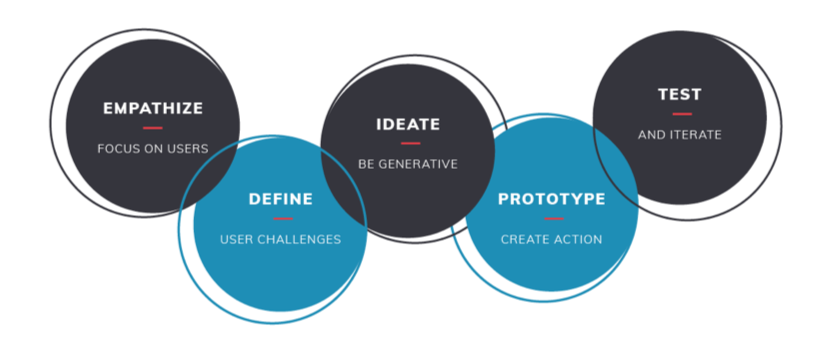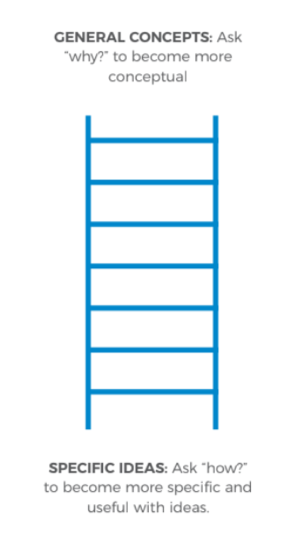How someone makes you feel is often what sets the tone for your relationship. There’s nothing quite like meeting someone who just “gets” you – how a product or website makes you feel is not that different. Everyone has a product or two they loved instantly because it feels as if it was made just for you.
Designing with a human-centered approach is a process full of movement and meaningful action. This approach means you are willing to evolve with the needs of your customer and you are flexible enough to make changes throughout the development process. At its core, human-centered design requires you to understand the people you hope to impact in order to create solutions from their perspective.
Human-centered design improves how your end users reach their goals by way of experiencing your product. From commercial sites to internal systems, if the users aren’t in love with what you’ve built, they aren’t going to want to use it. When it comes down to it, a human-centered approach might be just what you need to gain a competitive advantage.
Follow the phases of a human-centered design approach when building products and your customers might fall in love at first sight.

Empathize with Real Users
The most critical part of a human-centered approach is understanding the people for whom you are designing solutions. For example, let’s say you are redesigning software to improve the patient intake processes at a hospital. It is absolutely necessary to get out from behind your desk and enter the environment where this software is being used. In essence, you will want to watch people interact with the tool, document their use, ask questions and recognize their pain points.
Focus on the real humans who will be engaging with your product or service. If you can dive deep to understand the context and location of a problem facing potential customers, you will be peering into the minds of the people who will be impacted by your designs.
Clearly Define the Challenge Ahead
Understanding the challenges that your customers face from various perspectives is essential to a human-centered approach. This takes us back to the importance of empathy. Without a design process that is rooted in empathy and understanding, it is impossible to define a challenge that is informed with minimal bias. A human-centered designer constantly asks “Why?” to build upon their understanding of a problem and challenge their biases.
“Good designers never start by trying to solve the problem given to them. They start by trying to understand what the real issues are. As a result, rather than converge upon a solution, they diverge, studying people and what they are trying to accomplish, generating idea after idea after idea.”
—Don Norman
Generate a Multitude of Possible Solutions
Your first idea is almost always not the right solution. If there is anything worth falling in love with, it is the process of generating ideas to solve problems and not any single solution. Ideation encompasses brainstorming, synthesis, and early concept creation. As your team looks to explore possible solutions, it is important to consider many possibilities and leave no stone unturned. Iterative ideation is about encouraging wild ideas as a means of making creative leaps. These creative leaps will encourage your team to move beyond obvious solutions and ultimately you will begin to uncover unexpected areas for potential innovation.
 A popular idea generation technique is known as the ladder of abstraction where conceptual ideas are formed by asking “why” and specific ideas are generated by asking “how.” Teams can generate ideas on sticky notes and move them up and down the ladder to determine the specificity of their concepts. It is important to be generative during this process and foster an environment where no idea is a bad idea.
A popular idea generation technique is known as the ladder of abstraction where conceptual ideas are formed by asking “why” and specific ideas are generated by asking “how.” Teams can generate ideas on sticky notes and move them up and down the ladder to determine the specificity of their concepts. It is important to be generative during this process and foster an environment where no idea is a bad idea.
Prototype Ideas into Action
When most people think of design, they think of prototypes, wireframes, and elegant interfaces. When prototyping with a human-centered approach, the focus should be on rapid experimentation at minimal cost. The less effort and expense required to produce solutions, the earlier you can test designs in front of your intended audience. Considering the speed at which prototypes are being created, there is room to experiment with a number of potential solutions. Remember how we mentioned that it is important not to get attached to solutions? If you are not investing substantial time and money during prototyping, you are less likely to become invested in a solution that may not end up performing well in front of users.
Test and Repeat, Repeat and Test
Ideas become prototypes, prototypes become solutions, and solutions need evaluating. As long as you are continually reflecting on the needs and desires of your customers, your insights and ideas will naturally evolve. Get in front of your users frequently to identify where your solutions may need improving. It is important to understand that change and improvement are part of the design process. When change occurs, it is due to an opportunity you have identified to improve an experience for your customers. That should be a great feeling! This continual evolution will lead to a more effective solution that adapts with your customers.
Design is in motion. Like building any relationship, it is not a linear process. Embracing a human-centered approach is meant to repeat itself referring back to any step along the way and help you grow a deep understanding of your customers. If you commit to the process, you’ll help them fall in love with your work over and over again.